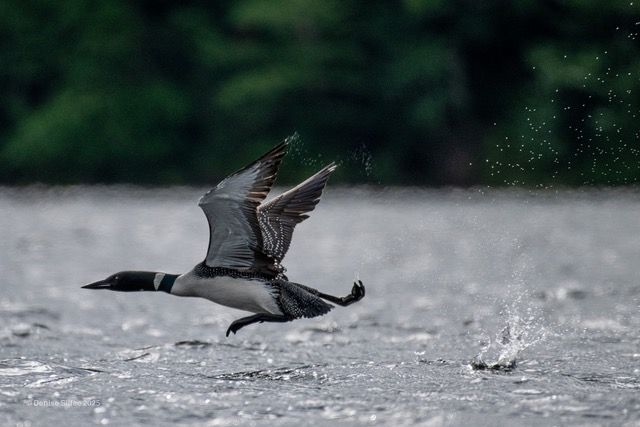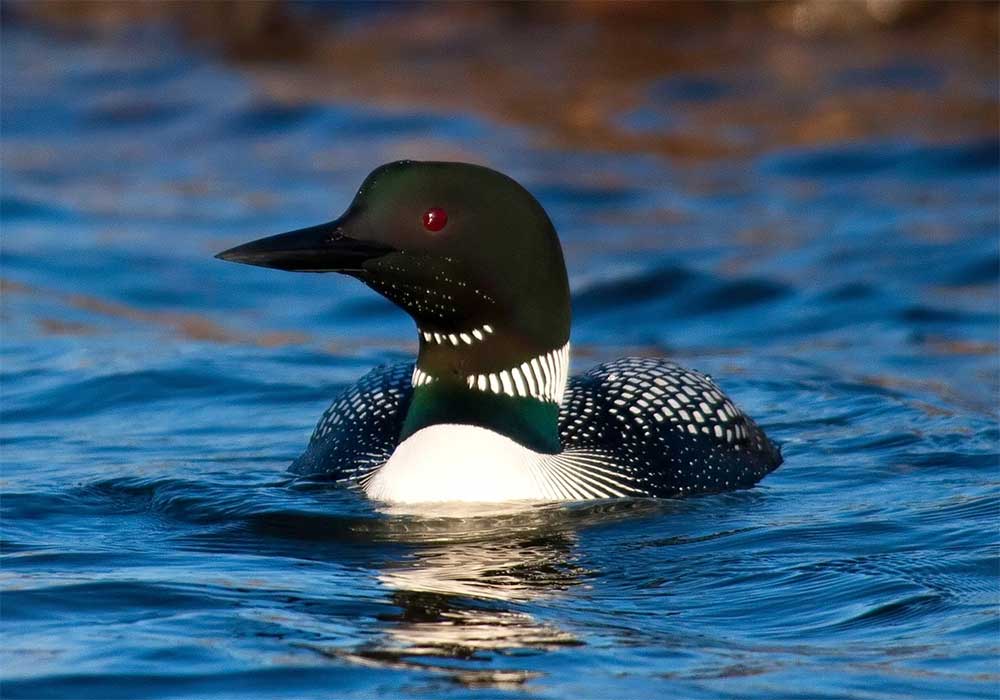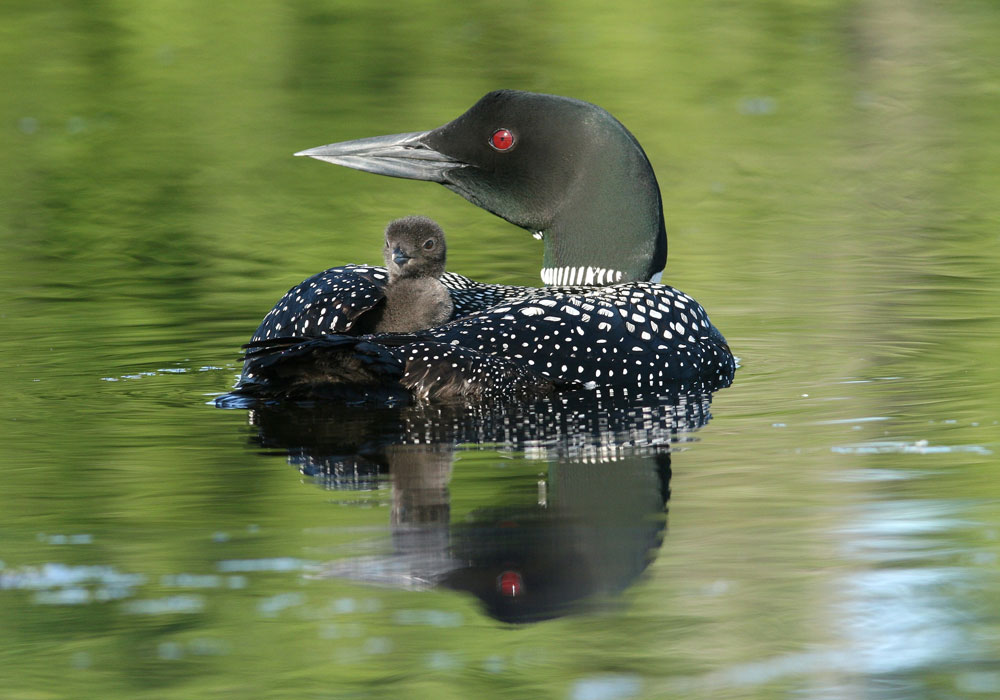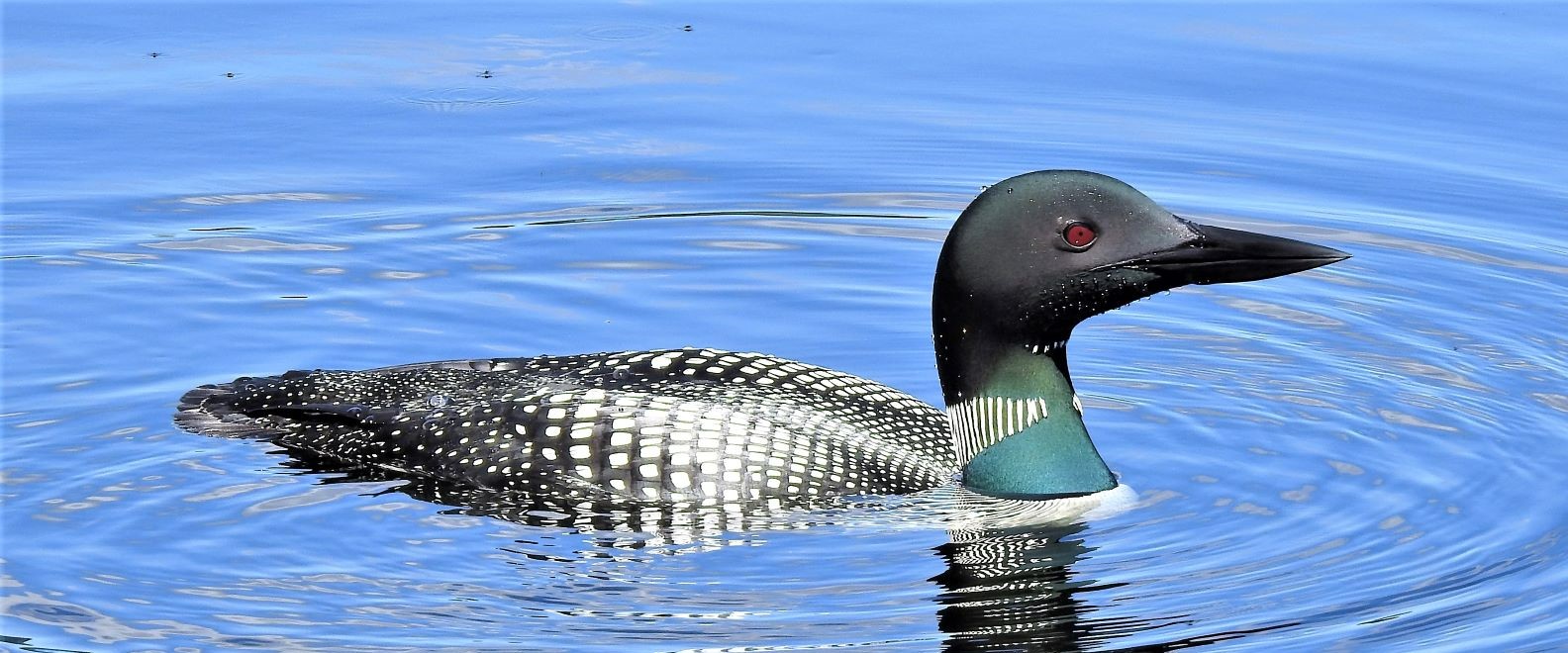Banner Photo by Betsy Berglund
Learn more about Loons from ACLC: Loon Zoom Sessions_2025-6

PLA Loon Report from Cindy Kindle
PLA Loon Population Report from Cindy Kindle
Loon Migration
“Where do loons go in the winter?”
Loon fall migration normally takes place during November and December. It begins with adult loons congregating on larger lakes in order to fatten up for the journey south. Loons may feed cooperatively by gathering in circles or lines. Flying about 70 – 75 mph, loons will travel 560 – 600 miles in eight hours, when they stop for the day.
The chart below, taken by permission from the Adirondack Center for Loon Conservation’s (ACLC) website, shows migration pathways from the Adirondacks to winter destinations. The chart reflects flights tracked by ACLC staff and collaborators using banding, geolocators, and satellite telemetry. After loon chicks fledge around 11 weeks, they will remain in the Adirondacks longer than the adults, raising the risk of getting stuck in the ice. Information in this post was taken with permission from a presentation by Denise Silfee, ACLC’s Director of Education and Communications, prepared for participants in the Loon-Friendly Lakes Certificati on Program. She cited the book “Loon Lessons” by James Paruk, as a primary source.
The Adirondack Center for Loon Conservation and its collaborators have used a variety of techniques, including banding, geolocators, and satellite telemetry, to learn more about the migratory pathways of Adirondack Loons. Although many questions remain unanswered, these new advances in technology help us get a better understanding of loon travel routes and patterns. Our satellite telemetry study showed that adult loons migrated from the Park to the Atlantic coast in less than a day. Band returns and sightings from Adirondack loons also indicates that the birds have traveled as far south as the coast of North Carolina and the Gulf coast of Florida.


Loon Certification Program
The Adirondack Center for Loon Conservation (ACLC) initated a “Loon-Friendly Lake Certficaton” Program in the summer of 2020 that promotes community-based environmental stewardship to better protect loons and their aquatic habitats. The ACLC, located in Saranac Lake, conducts scientific research and engaging educational programming to promote and inspire passion for the conservation of Common Loons. Learn More
.jpg)




